Queen Elizabeth National Park
Sprawling across Uganda’s western rift valley floor, Queen Elizabeth National Park is the country’s flagship wildlife destination—a place where East African savannahs collide with volcanic craters, tropical forests, papyrus-lined wetlands, and the shimmering Kazinga Channel.
Few places in Africa pack this much ecological and wildlife diversity into a single protected area.
From tree-climbing lions in the Ishasha Sector to chimpanzees in Kyambura Gorge, and over 600 bird species flitting across its lakes and grasslands, Queen Elizabeth is not just a national park—it’s a condensed African wilderness in all its textures.
At a Glance
| Feature | Details |
|---|---|
| Location | Southwestern Uganda (Rubirizi, Kasese & Rukungiri districts) |
| Size | Approx. 1,978 km² |
| Altitude Range | 910m – 1,390m above sea level |
| Coordinates | Straddles the equator (notable marker near Kikorongo) |
| Distance from Kampala | ~410 km (6–7 hours by road) |
| Closest Airports | Kasese Airport or Mweya Airstrip (chartered flights only) |
| Entry Gates | Katunguru, Kikorongo, Ishasha, Kabatooro, Mweya, Kasenyi |
| Management Authority | Uganda Wildlife Authority (UWA) |
| UNESCO Status | Queen Elizabeth Biosphere Reserve (part of the Great Albertine Rift) |
Ecological Tapestry: Landscapes & Habitats
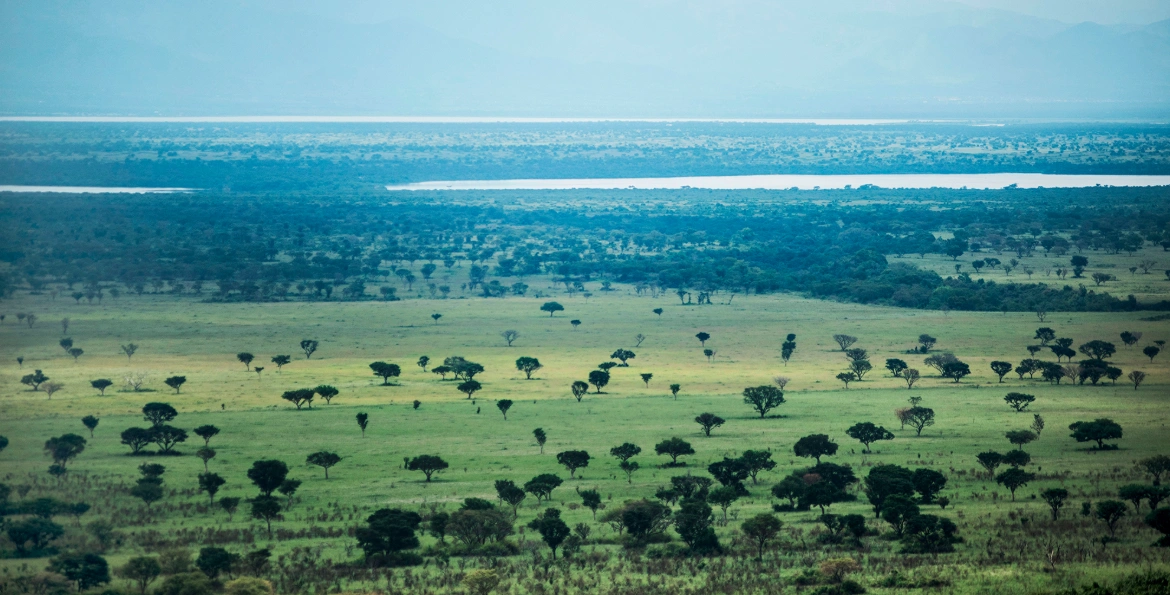
Queen Elizabeth’s terrain is as rich and varied as its wildlife. The park lies within the Albertine Rift, a region known globally for endemic biodiversity.
Over millennia, shifting tectonic plates and volcanic activity sculpted a mosaic of landscapes—ranging from rolling savannahs and humid forests to explosion craters, crater lakes, and the iconic Kazinga Channel, which links Lake Edward and Lake George.
This diversity of habitat supports an unusually wide range of species. Unlike parks with one dominant biome (e.g., open plains), Queen Elizabeth encompasses multiple micro-ecosystems:
Acacia and candelabra tree woodlands in Kasenyi
Open grassland savannahs in Mweya and Ishasha
Riparian wetlands and swamps along Kazinga and Lake George
Tropical gallery forest in Kyambura Gorge
Moist lowland forest in Maramagambo
Saltwater and freshwater crater lakes—many still active economically or geologically
The Rwenzori Mountains rise dramatically just to the northwest, offering a majestic backdrop and regulating the region’s rainfall and temperature.
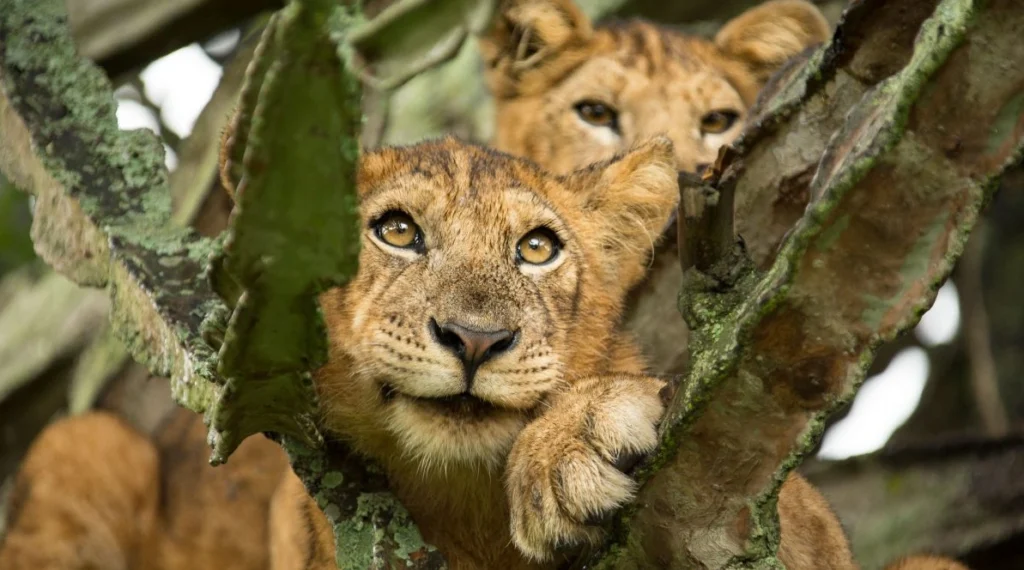
Key Safari Zones
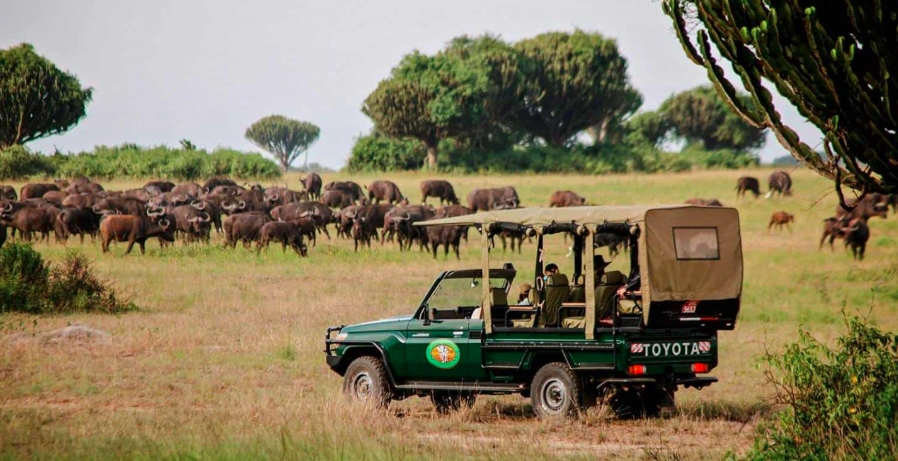
I. Mweya Peninsula
Mweya forms the heart of tourist activity in Queen Elizabeth.
Nestled between Lake Edward and the Kazinga Channel, it offers sweeping views, a central launch point for boat safaris, and the highest concentration of visitor accommodations.
Though it’s not the best area for predator sightings, it’s ideal for general game viewing, waterbird photography, and family-friendly safaris.
Wildlife: Buffalo, elephants, warthogs, hippos, waterbuck
Activities: Kazinga boat safaris, crater lake drives, birdwatching
Accessibility: Easily reached from Katunguru or Kasese
Lorem ipsum dolor sit amet, consectetur adipiscing elit. Ut elit tellus, luctus nec ullamcorper mattis, pulvinar dapibus leo.
II. Kasenyi Plains
Located northeast of Mweya, Kasenyi is a classic savannah game drive zone, dominated by golden grasslands and scattered acacias.
It’s the main breeding area for Uganda kob, whose presence attracts lions, leopards, and spotted hyenas.
Best for: Early morning game drives targeting predators
Popular sightings: Lions hunting kob, elephants in small herds
Birding: Abyssinian ground hornbill, grey-crowned crane, raptors
III. Ishasha Sector
This remote southern part of the park is famous for its tree-climbing lions—a rare behavior seen in just two places in Africa.
The fig and acacia trees of Ishasha offer the perfect platforms for lions to escape heat and insects.
Landscape: Remote savannah, seasonal swamps, woodland
Wildlife: Lions, topi, buffalo, elephants, leopards (less frequent)
Vibe: Wild, off-the-beaten-path, low tourist density
Wildlife, Birds & Signature Safari Experiences
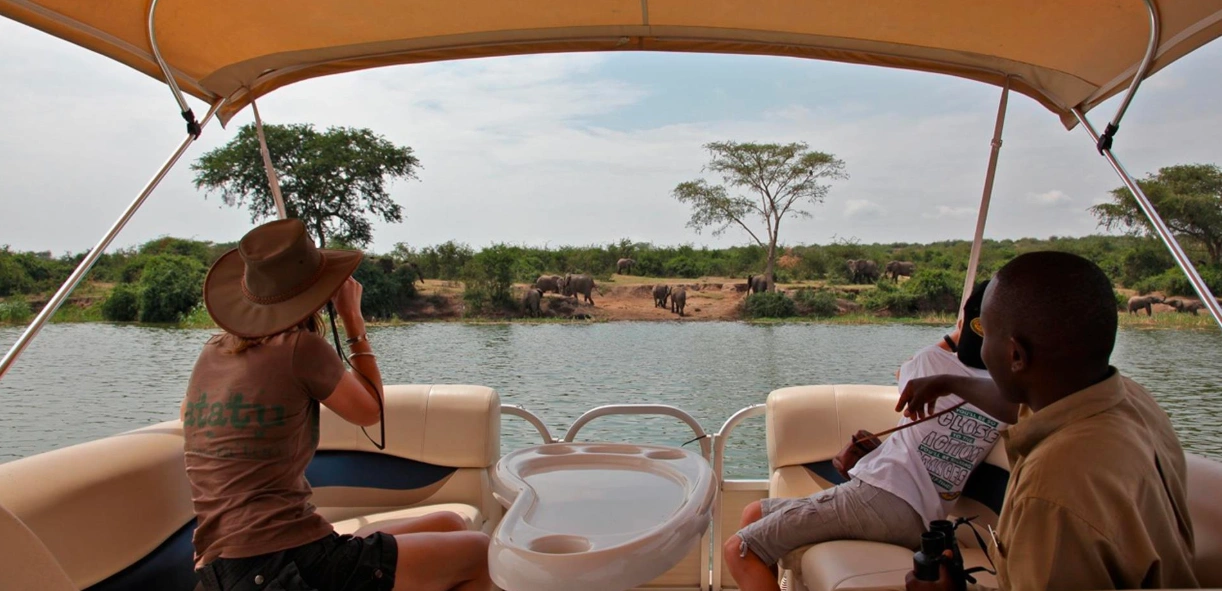
1. Big Game Mammals
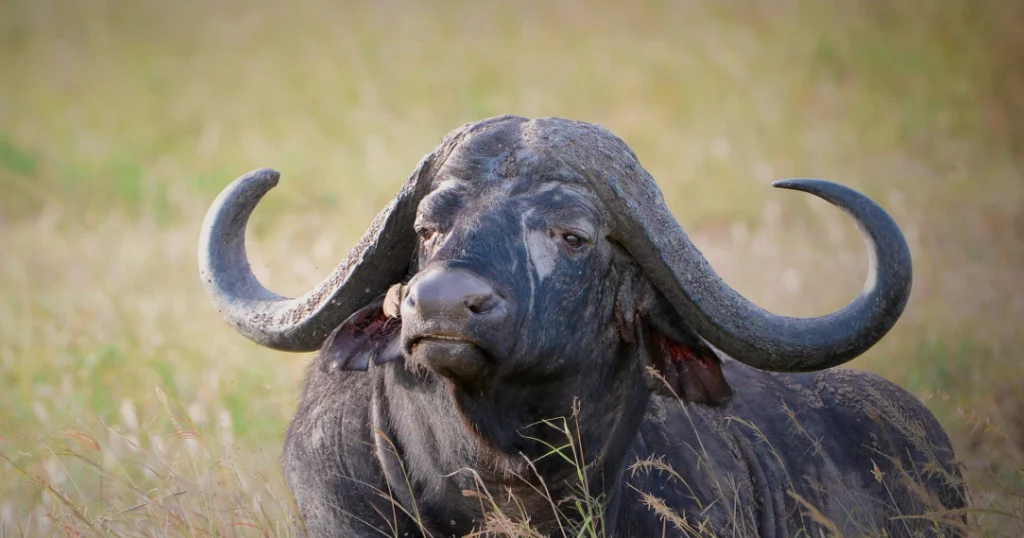
With over 95 mammal species, Queen Elizabeth is Uganda’s most biodiverse park for terrestrial wildlife.
While it doesn’t have the same lion density as parts of Kenya or Tanzania, it compensates with incredible ecological variety and some rare behaviors—most notably the tree-climbing lions of Ishasha.
Key Mammals (Selected Highlights)
| Species | Notes |
|---|---|
| African Elephant | Often seen in Kasenyi and along the Kazinga Channel |
| African Buffalo | Ubiquitous in herds; sometimes very large groups near water bodies |
| Uganda Kob | Symbol of the park; forms large harems, especially in Kasenyi Plains |
| Lion | Found mainly in Kasenyi and Ishasha (tree-climbers here) |
| Leopard | Elusive; spotted occasionally in Mweya and Maramagambo |
| Hippo | Huge pods in the Kazinga Channel; also graze at night around lodges |
| Giant Forest Hog | Unique to forest margins; most visible in Mweya and Kyambura |
| Topi | Mostly in Ishasha; a rarer antelope in Uganda |
| Hyena (Spotted) | Scavengers often heard at night or seen at dawn |
| Warthog | Very common; often seen in lodge compounds too |
2. Birding Paradise
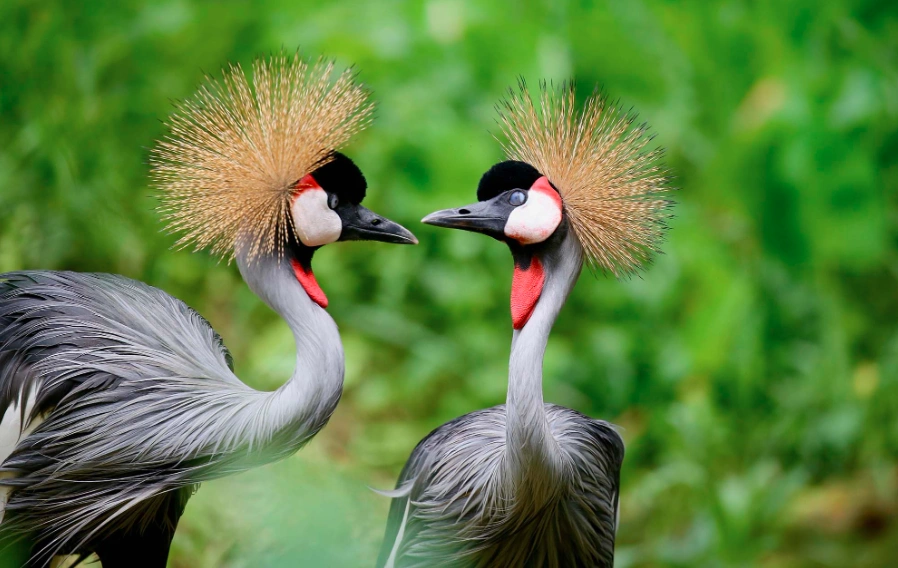
With over 600 recorded bird species, Queen Elizabeth ranks among the top birding destinations not just in Uganda but globally.
It’s particularly rich in waterbirds, raptors, and Albertine Rift endemics, drawing both casual observers and seasoned twitchers.
Birding Hotspots
Kazinga Channel: African fish eagle, African skimmer, saddle-billed stork
Maramagambo Forest: Forest flycatchers, greenbuls, and blue-headed sunbirds
Kyambura Gorge: Narina trogon, black bee-eaters
Crater lakes: Flamingos (especially at Katwe and Munyanyange, seasonally)
Ishasha River and swamps: Shoebill (rare but possible)
3. The Kazinga Channel
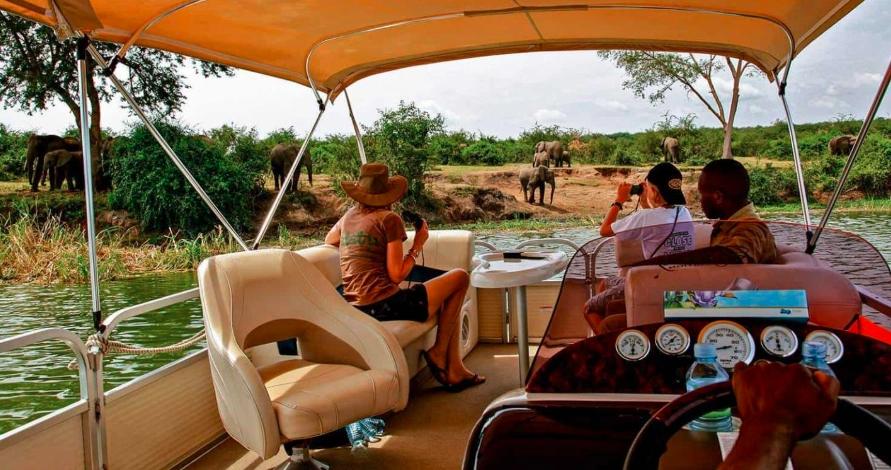
The Kazinga Channel, a 32-km natural waterway linking Lake Edward to Lake George, is the park’s ecological lifeline—and its premier wildlife-viewing experience.
Boat Cruises on the Kazinga Channel
No visit to Queen Elizabeth is complete without a boat safari here. Departing from Mweya, cruises glide past hippo pods, basking crocodiles, elephant herds, and countless shorebirds.
It’s one of the best spots in East Africa to observe wildlife interaction from the water.
Cruise Duration: 2 hours
Departure Times: 11:00 AM and 3:00 PM (subject to change)
Run by: UWA and private lodges (e.g., Mweya Safari Lodge)
Expect to see:
Hippos (hundreds)
African buffalo wading in
Monitor lizards, crocs
Pied kingfishers, pelicans, herons, and storks
Elephants bathing or crossing the shorelines
4. Kyambura Gorge
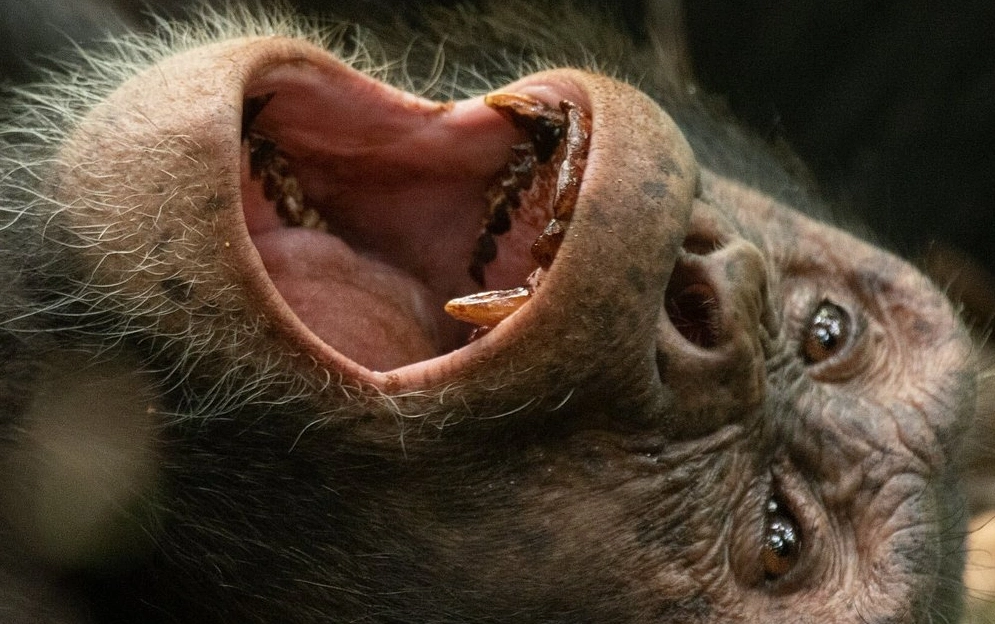
Nicknamed the “Valley of Apes”, Kyambura Gorge is a stunning, forest-filled chasm carved into the open savannah.
The gorge is home to a small, semi-habituated chimpanzee population, making it a unique, albeit unpredictable, tracking experience.
What to Expect
Chimp Tracking Success Rate: 40–60% (not guaranteed)
Other Wildlife: Black-and-white colobus, vervet monkeys, giant forest hogs
Birds: African finfoot, green pigeons, and turacos
Terrain: Steep forest trails, moderate difficulty—best for fit travelers
Compared to Kibale’s dense chimp populations, Kyambura is less reliable but more atmospheric, offering an Indiana Jones–style adventure into a surreal ecosystem.
5. Crater Lakes, Volcanic History & Cultural Tourism
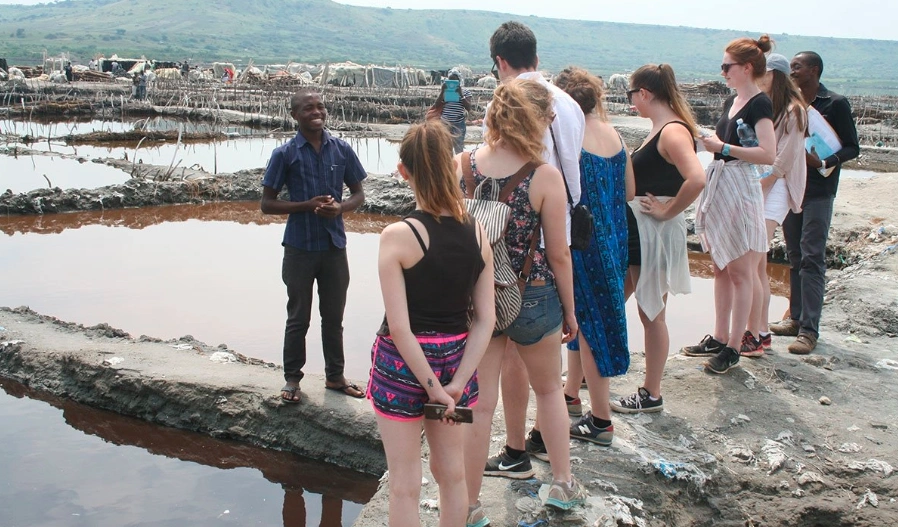
Queen Elizabeth is also known for its explosion craters—formed thousands of years ago from volcanic eruptions along the Albertine Rift.
Today, these craters are quiet but visually arresting, filled with either water, salt, or dense vegetation.
Notable Crater Attractions
Katwe Salt Lake: Traditional salt harvesting still takes place—an amazing photo opportunity and cultural stop
Lake Munyanyange: Flamingo hotspot (seasonal)
Bunyampaka & Nyamunuka Lakes: Rich in minerals; home to rare bird species
Cultural Experiences
Katwe Village Tour: Meet salt miners, learn about local trade and life
Leopard Village: Community-led conservation storytelling and craft demonstrations
Coffee tours and traditional dance experiences in surrounding communities
When to Visit Queen Elizabeth National Park
| Season | Months | Conditions |
|---|---|---|
| Dry Season | Jan–Feb, Jun–Aug | Best for wildlife viewing; thinner vegetation and animals cluster near water |
| Wet Season | Mar–May, Sept–Nov | Greener landscapes, better for photography and birding; occasional muddy trails |
Temperature Range: 18–30°C (64–86°F) year-round
Rainfall Peaks: April and November
Humidity: High, especially near Kazinga Channel and forested areas
Best Time to Visit: June to August, and January to February (dry, less rain, more game sightings)
Accommodation: Where to Stay
| Region | Budget | Examples |
|---|---|---|
| Mweya | $$$ Luxury | Mweya Safari Lodge, Kyambura Gorge Lodge |
| $$ Midrange | Bush Lodge (Nature Lodges), Enganzi Game Lodge | |
| $ Budget | Mweya Hostels, Kazinga Channel View Resort | |
| Ishasha | $$$ Luxury | Ishasha Wilderness Camp |
| $$ Midrange | Enjojo Lodge | |
| Kyambura | $$ Midrange | Buffalo Safari Lodge, Twin Lakes Safari Lodge |
| Crater Zone | $$ Midrange | Katara Lodge, Irungu Forest Safari Lodge |
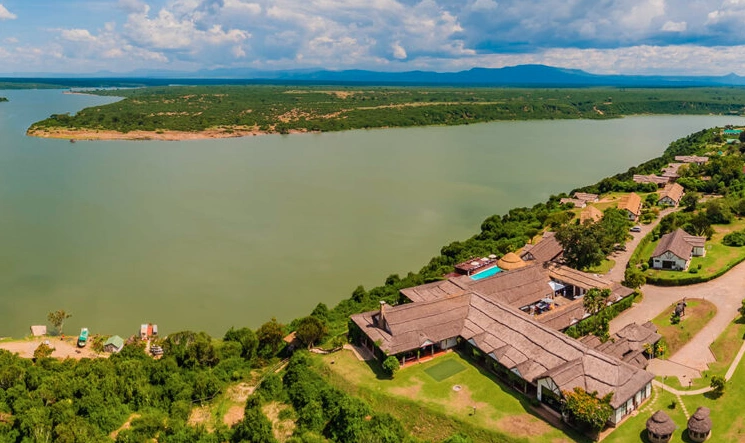
Things to Consider When Booking:
Mweya offers access to boat cruises and central savannah plains
Ishasha is ideal for tree-climbing lions and off-the-grid luxury
Kyambura/Crater zone is scenic, quiet, and bird-rich
Getting There & Park Access
Queen Elizabeth is easily accessible and well-connected by both road and air.
By Road
From Kampala: ~7–8 hours via Mbarara (tarmac all the way)
From Fort Portal: ~3 hours (scenic route via Kasese)
From Bwindi (Ishasha): 2–5 hours depending on trailhead and road condition
By Air
Domestic Flights: From Entebbe or Kajjansi to Mweya or Kasese airstrips
Operators: Aerolink Uganda, Bar Aviation
Entry Fees & Permits
| Fee Type | Foreign Non-Resident | East African Citizen |
|---|---|---|
| Park Entry (per 24 hrs) | $40 | UGX 20,000 |
| Vehicle Entry (saloon car) | $10 | UGX 20,000 |
| Chimp Tracking (Kyambura) | $50 | UGX 30,000 |
| Boat Cruise (UWA) | ~$30 | UGX 30,000 |
Children pay less, and EAC rates apply for Ugandans, Kenyans, Tanzanians, Rwandans, and South Sudanese
Prices vary slightly depending on operator (especially boat cruises)
Health, Safety & Responsible Travel Tips
Malaria: Risk is moderate to high—use insect repellent, long clothing, and take antimalarials
Tsetse Flies: Present in Ishasha—avoid dark blue/black clothes; consider tsetse traps
Safety: Park is generally safe; always use a guide for game drives and walks
Community Etiquette: Ask before taking photos in villages, tip guides respectfully
Plastic Ban: Uganda has banned single-use plastic bags—bring reusable alternatives
Final Thoughts
Queen Elizabeth National Park is not just a wildlife destination—it’s a convergence of ecosystems, cultures, and landscapes unmatched anywhere else in Uganda.
From the roar of a lion lounging in a fig tree to the silent drift of a hippo pod in Kazinga, this park delivers a sensory overload in the best way possible.
Whether you’re here for birds, big cats, crater lakes, or community encounters, Queen Elizabeth offers a journey that feels vast, rich, and deeply personal.

